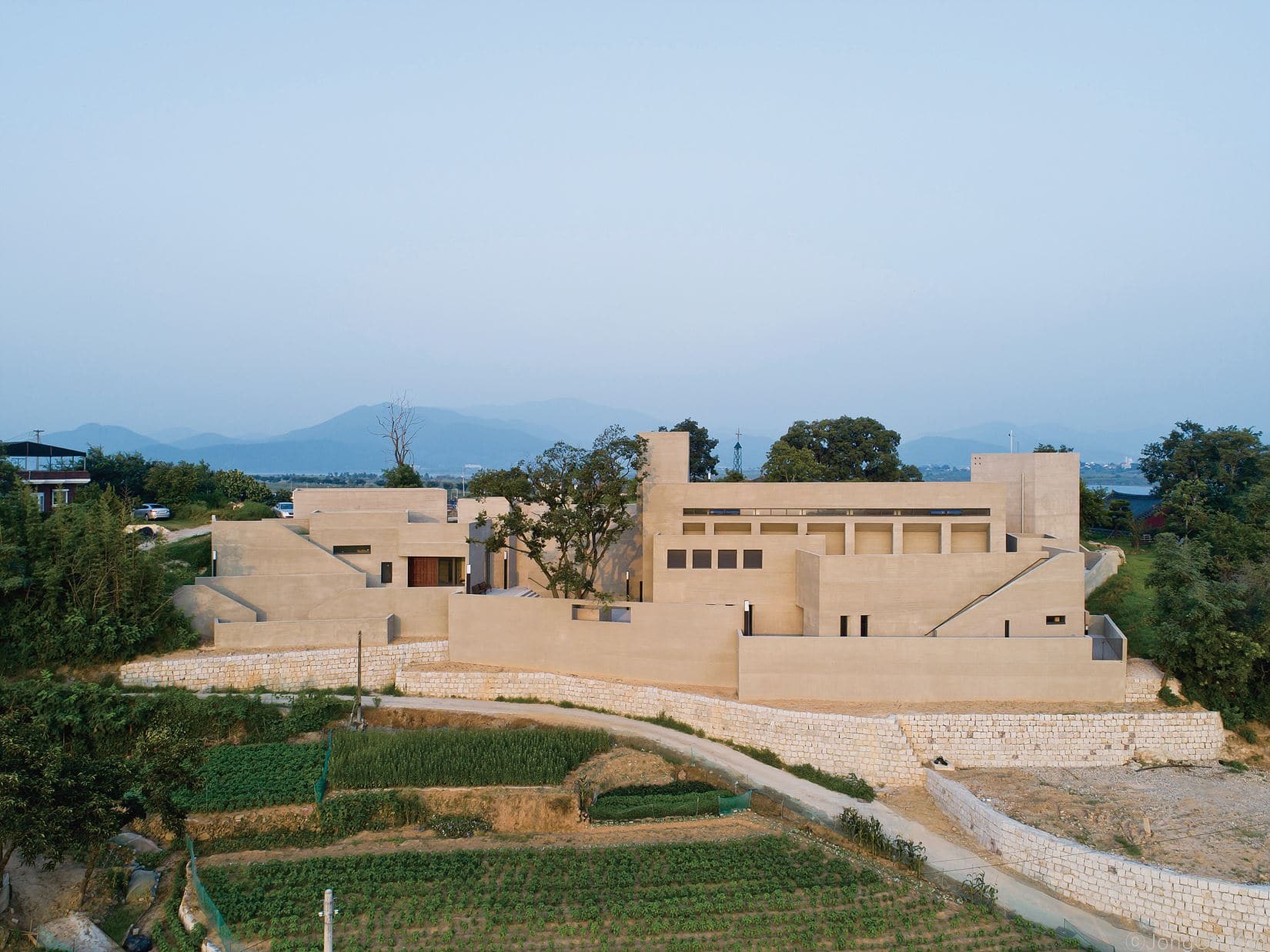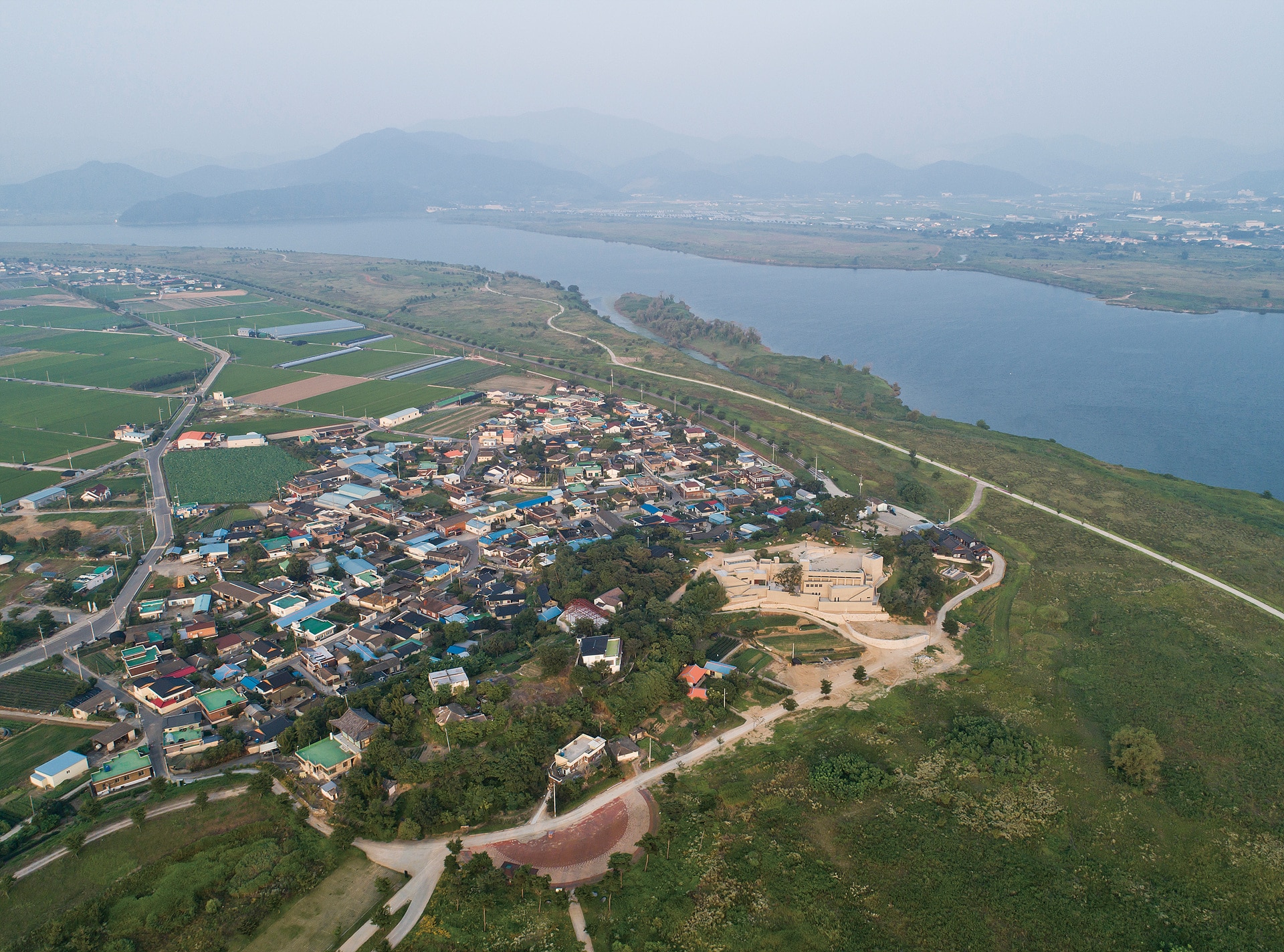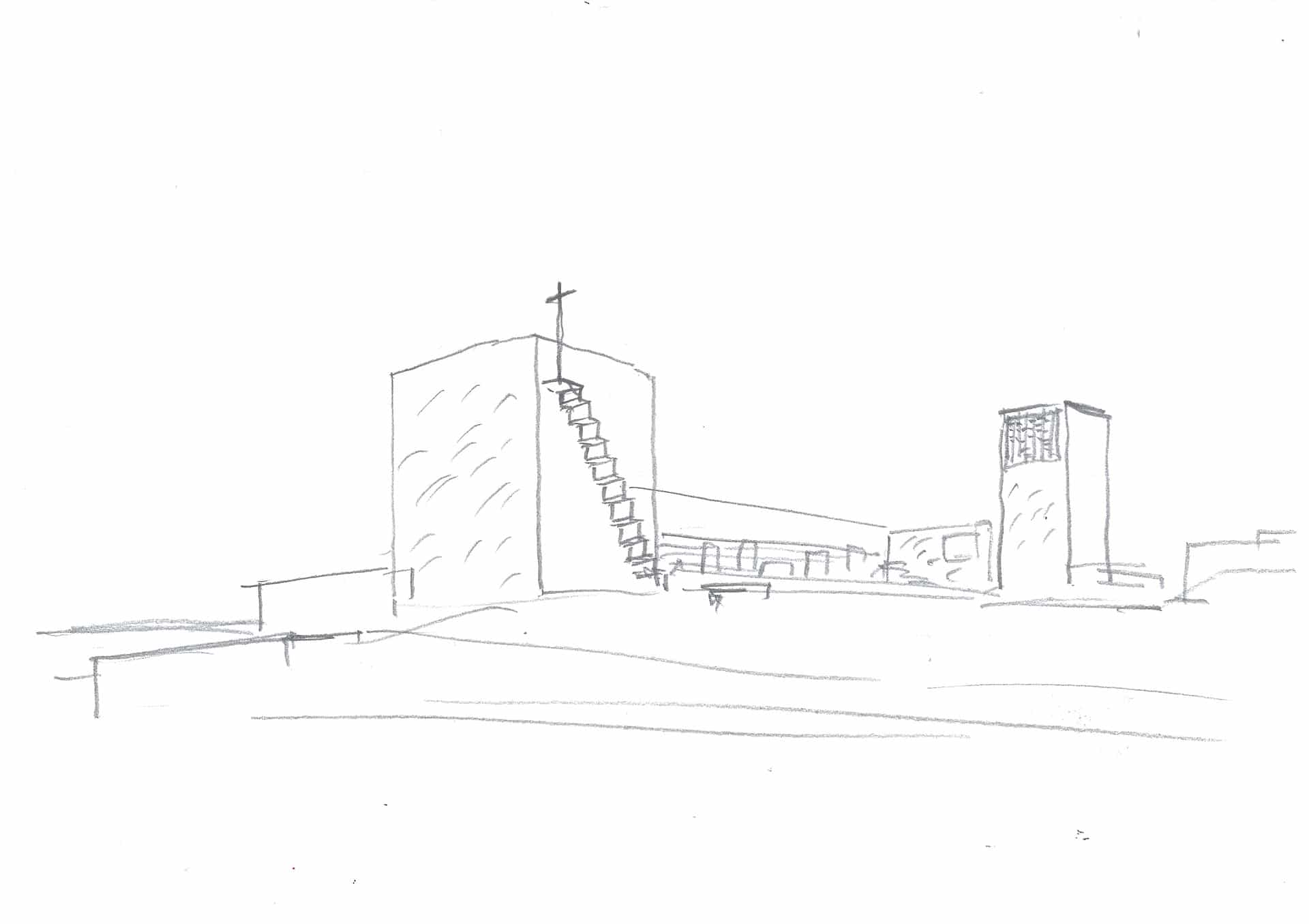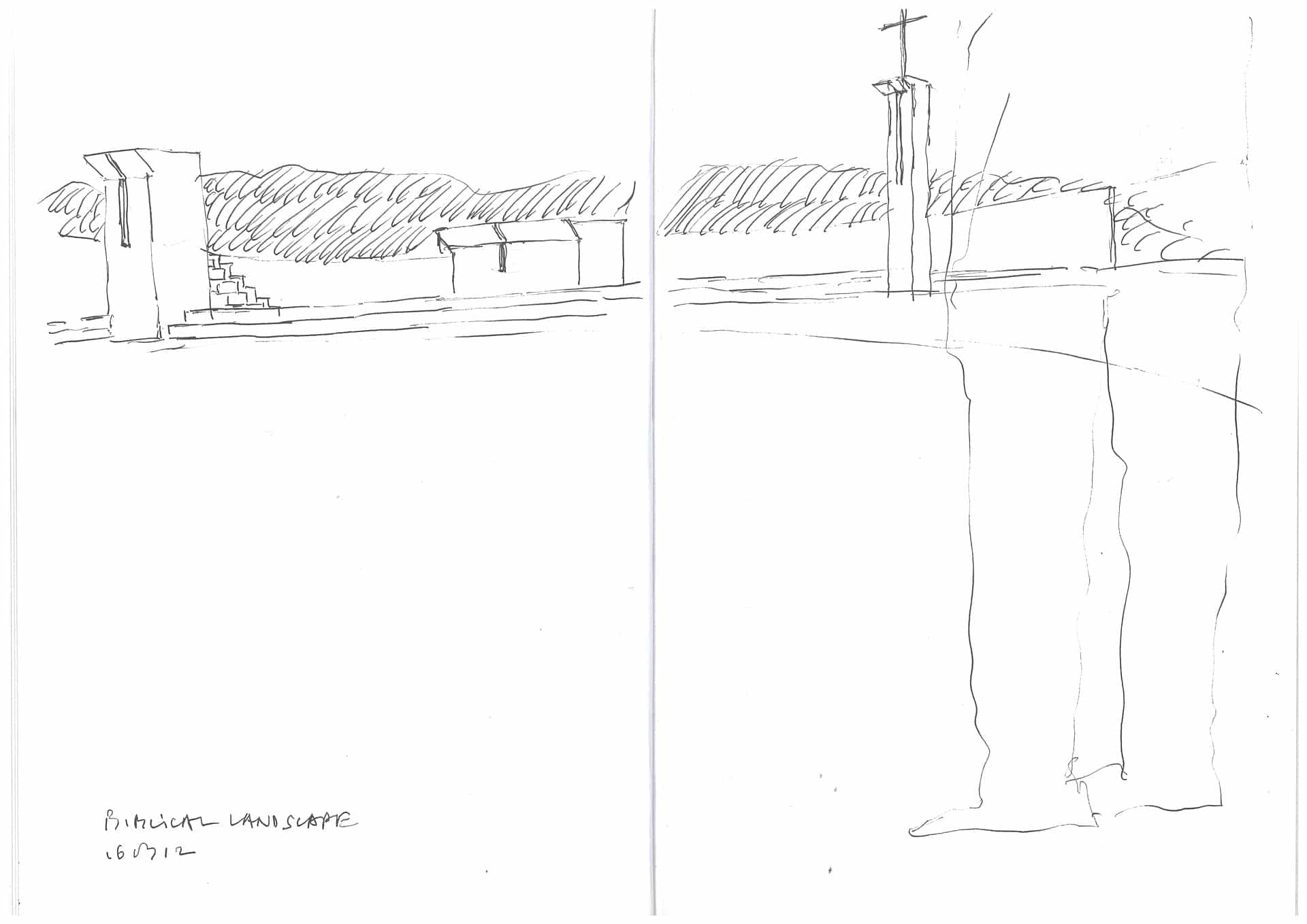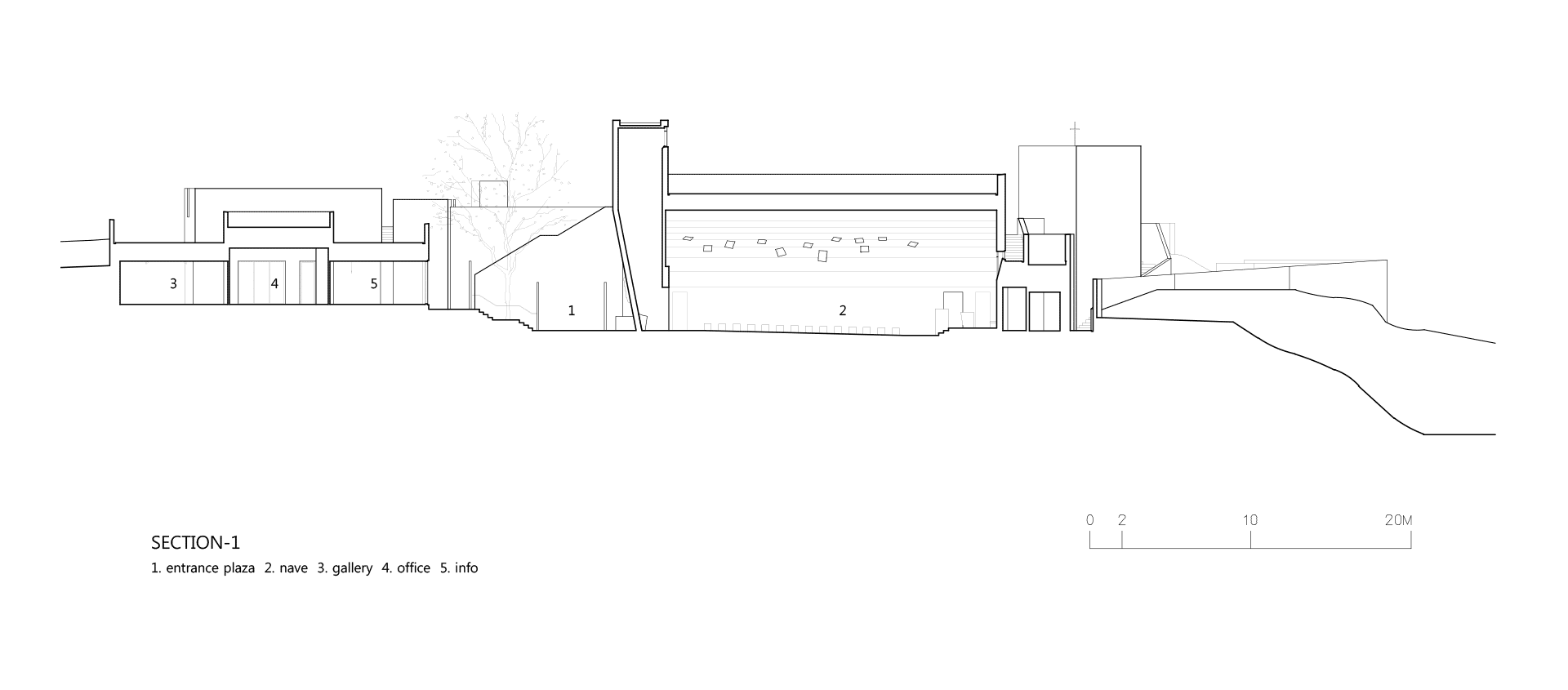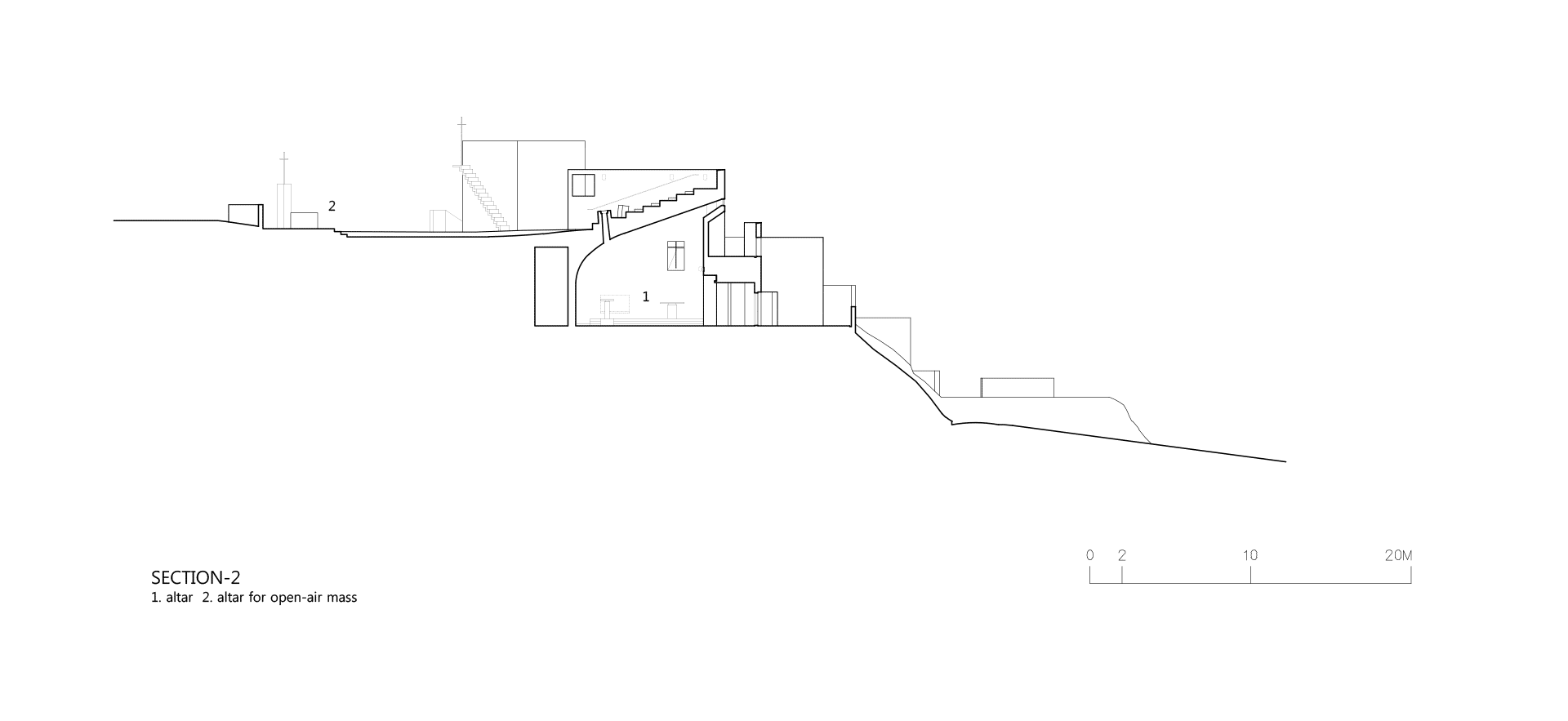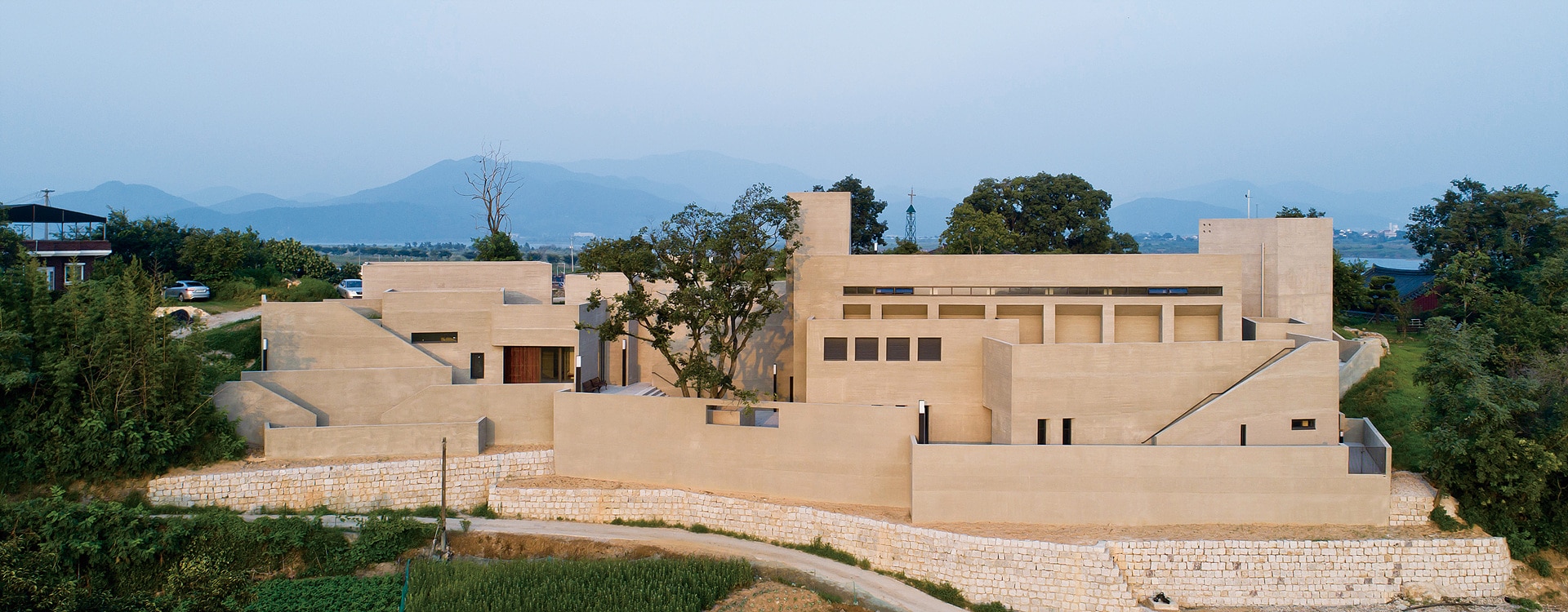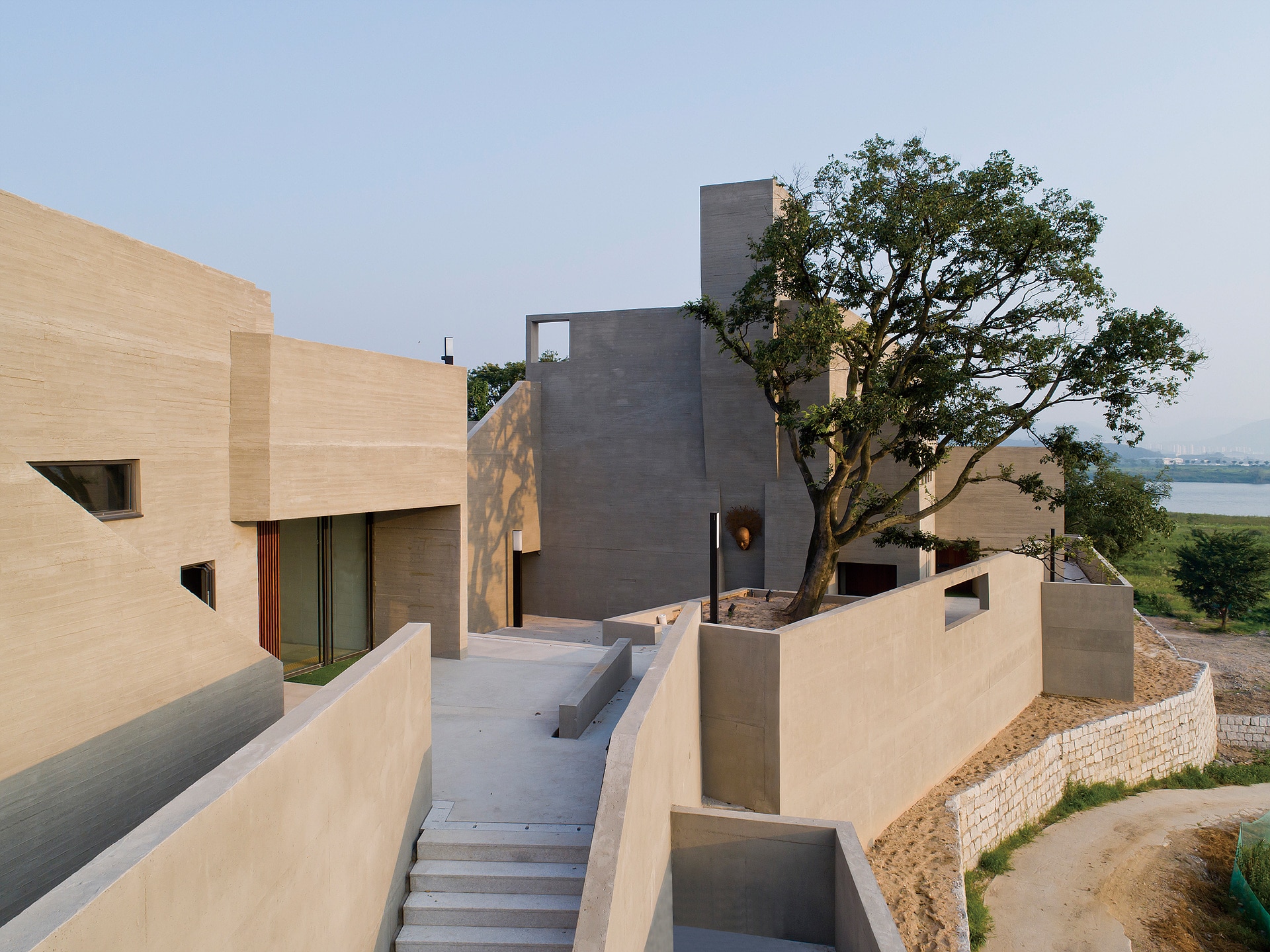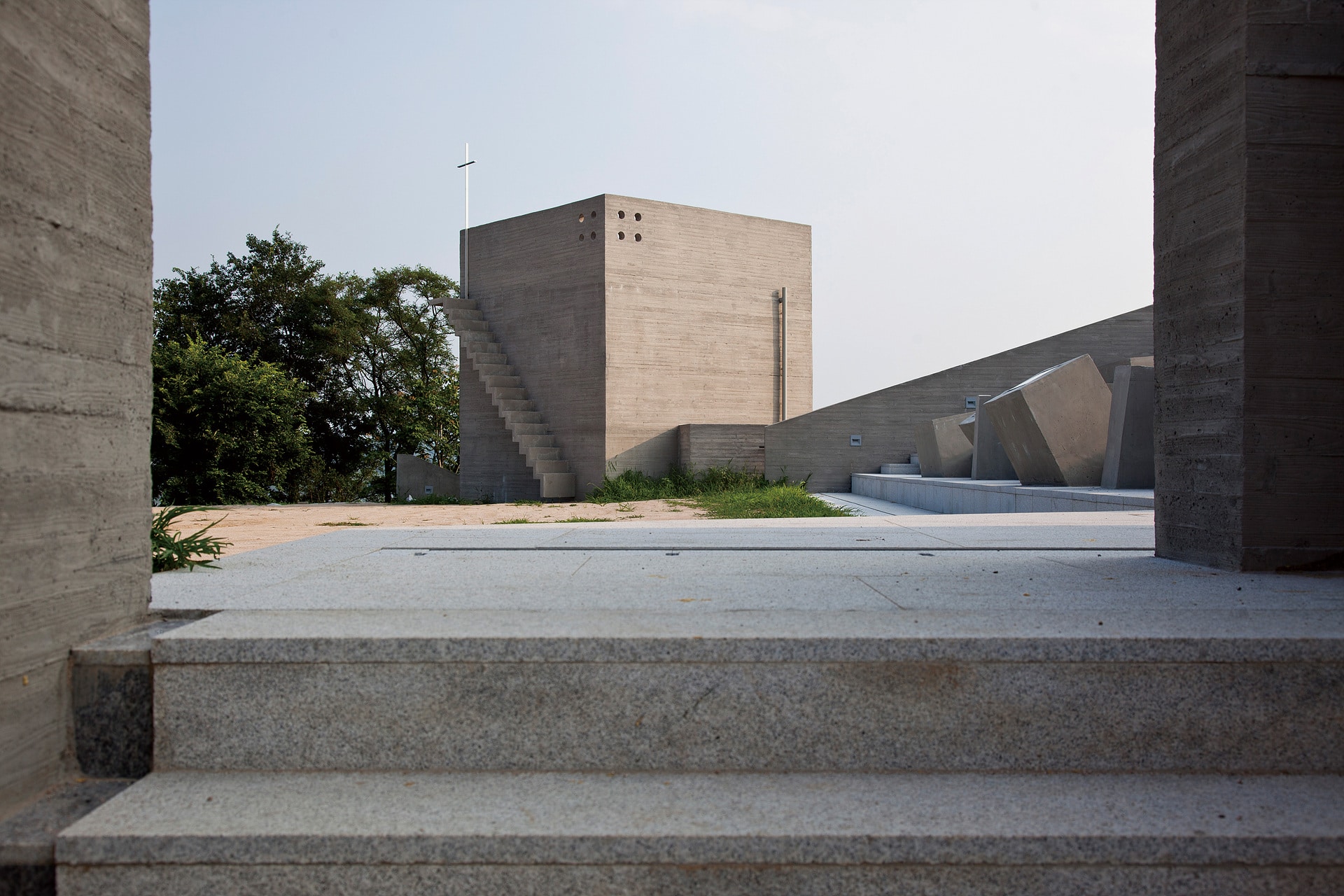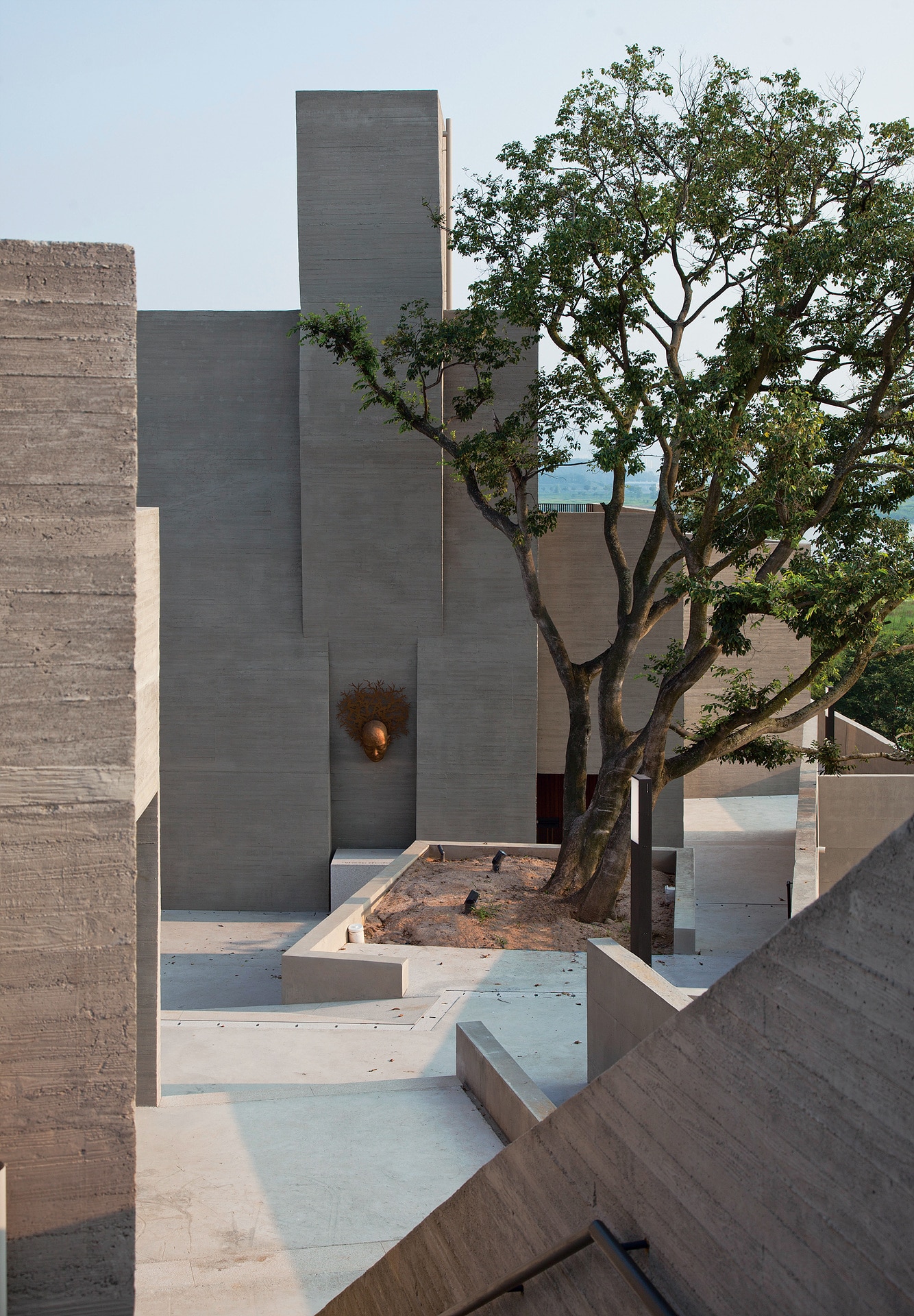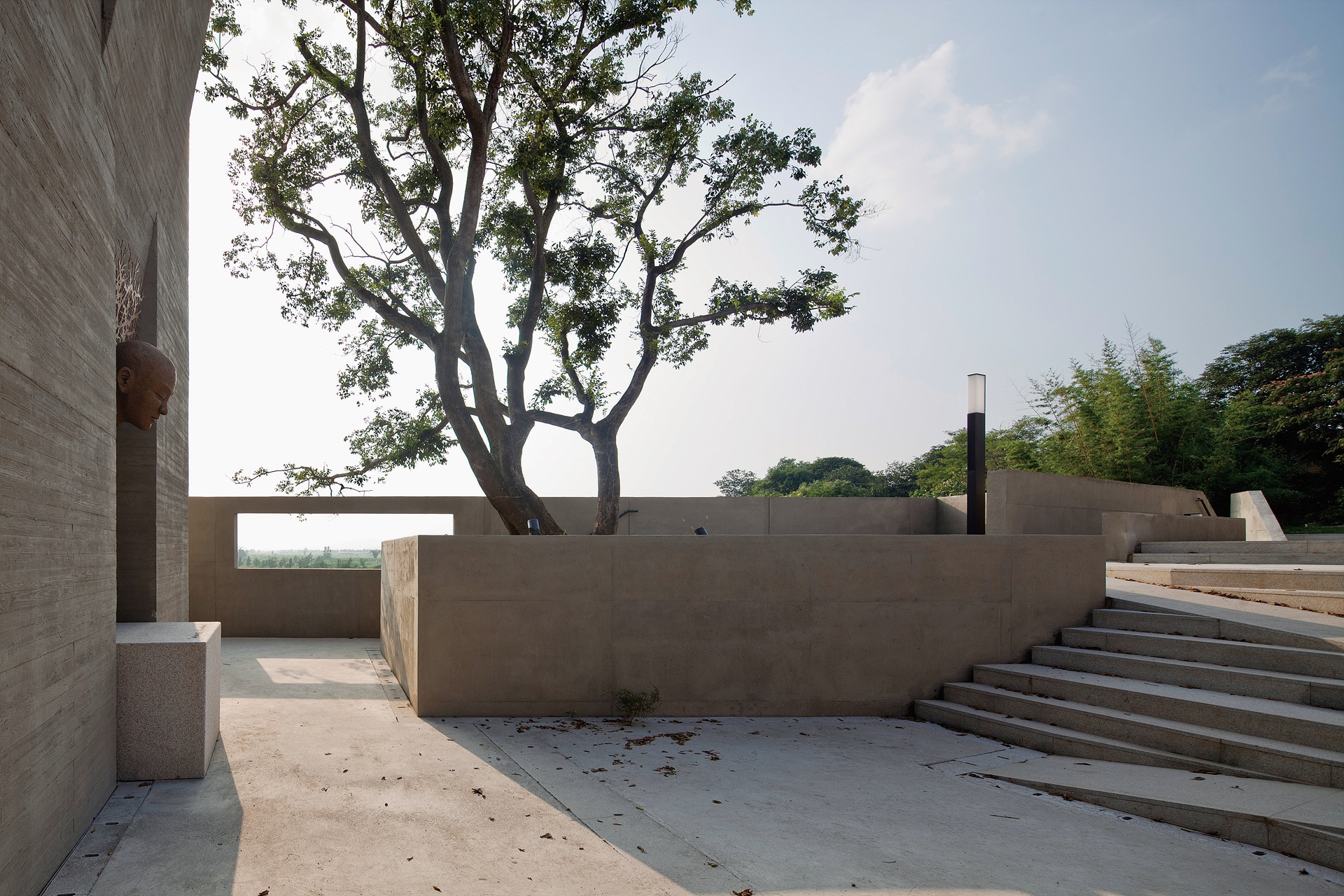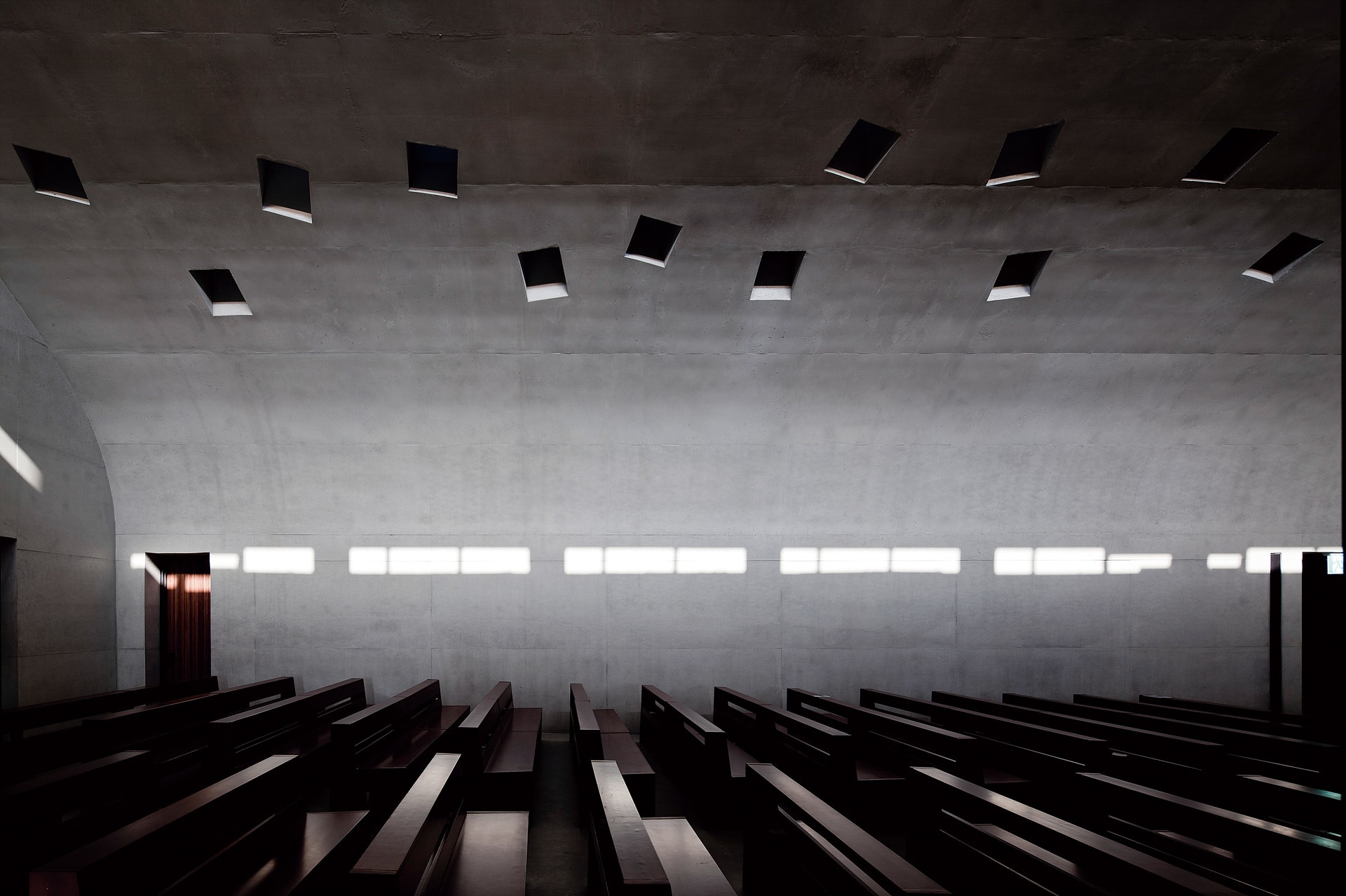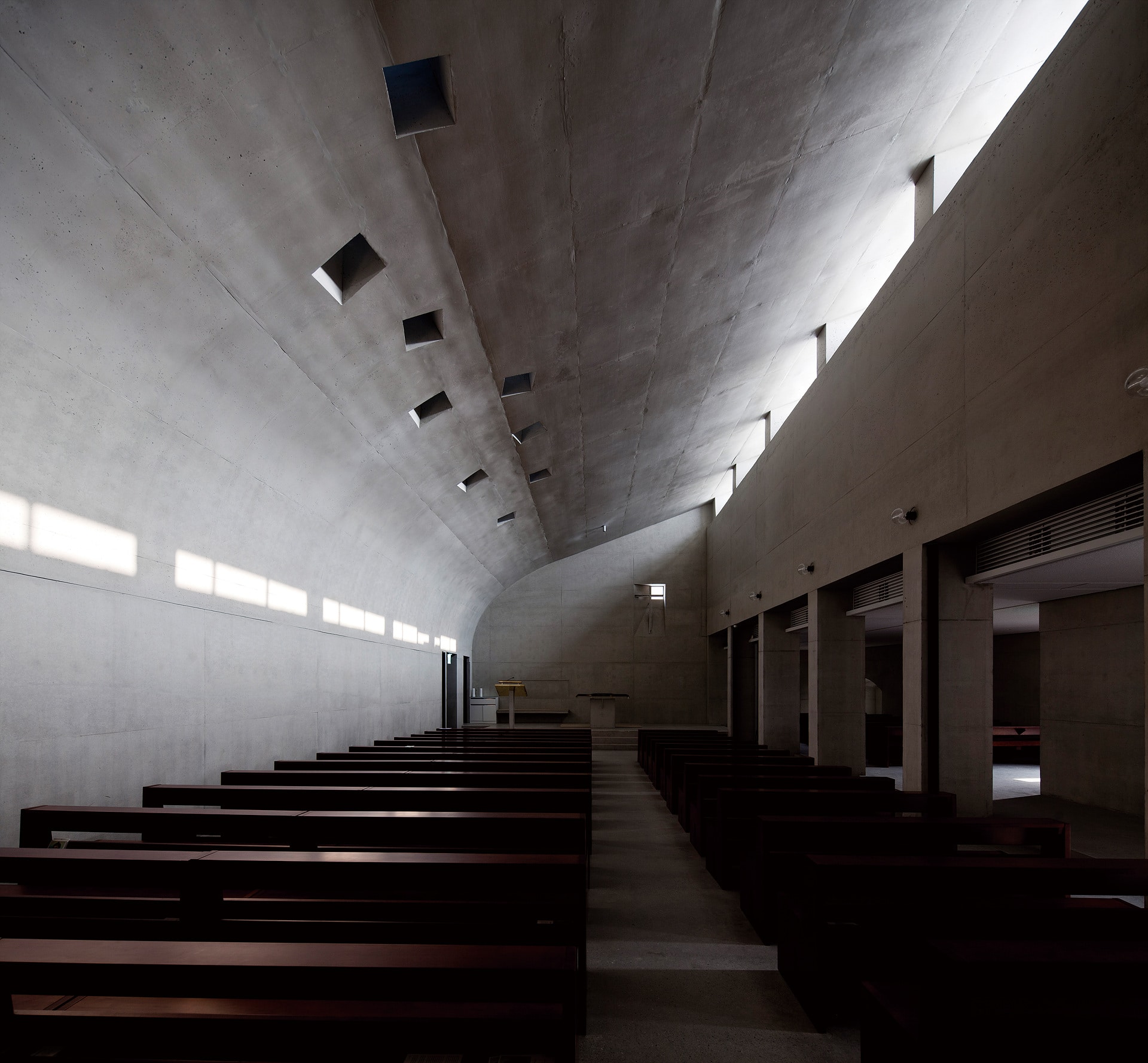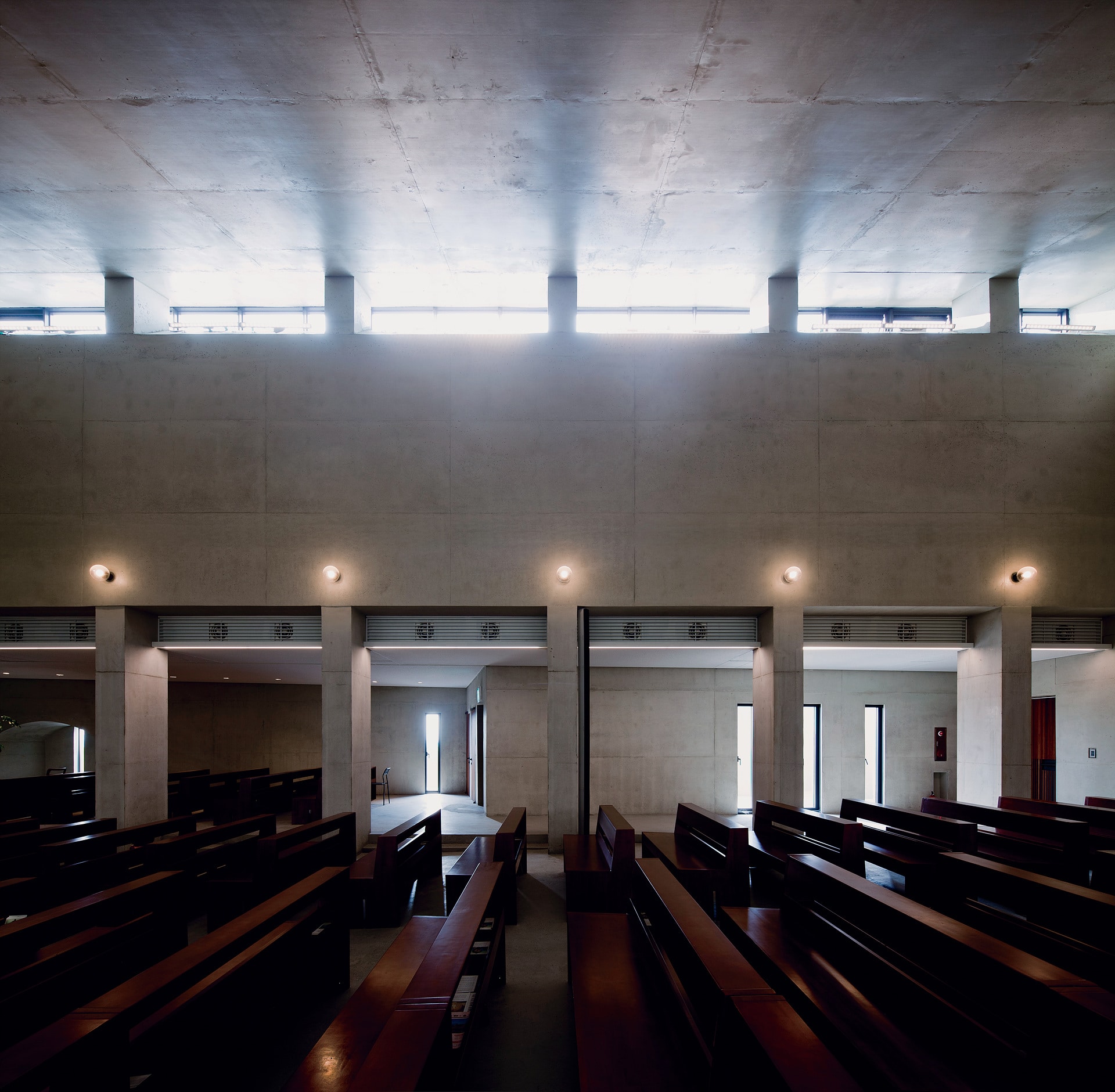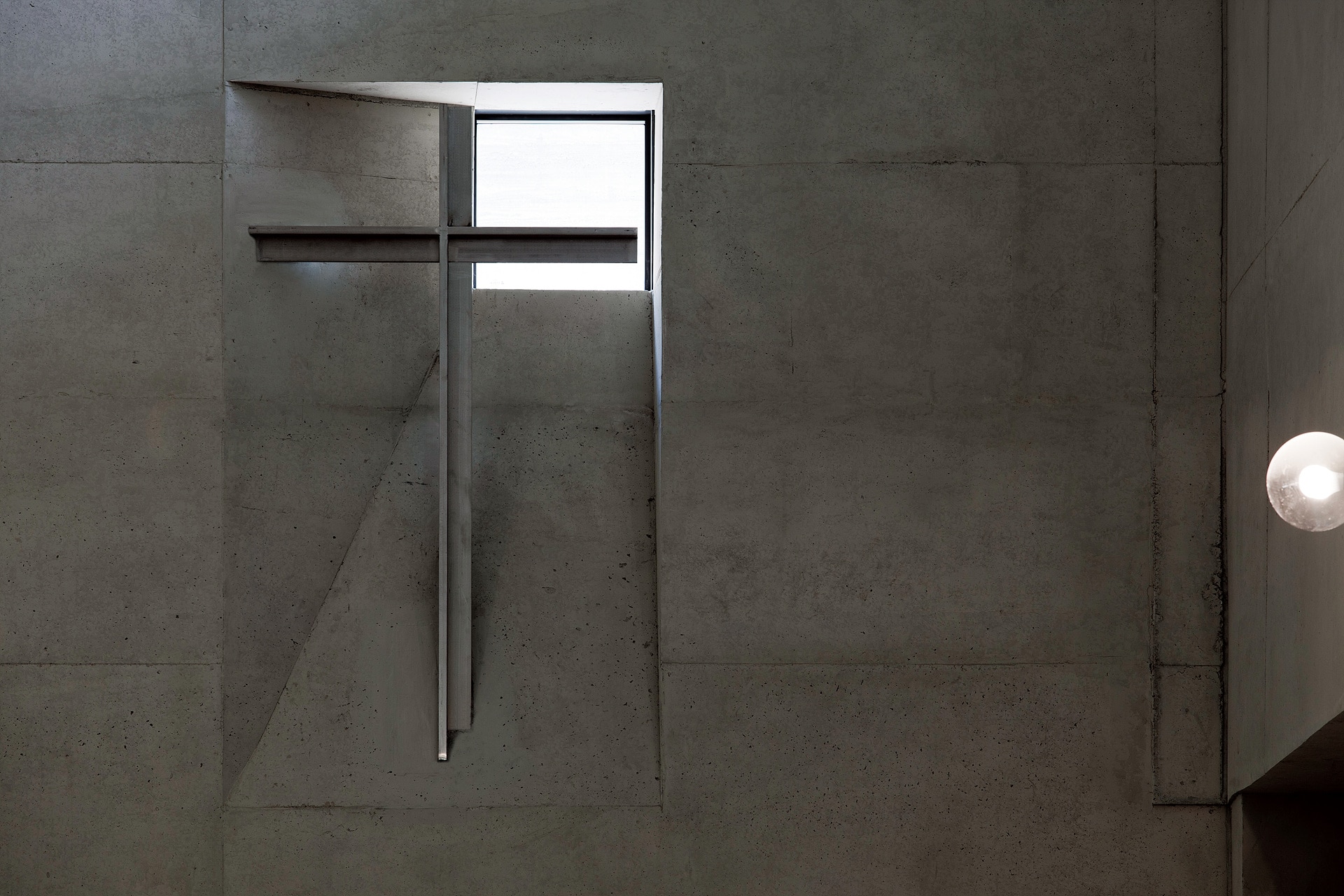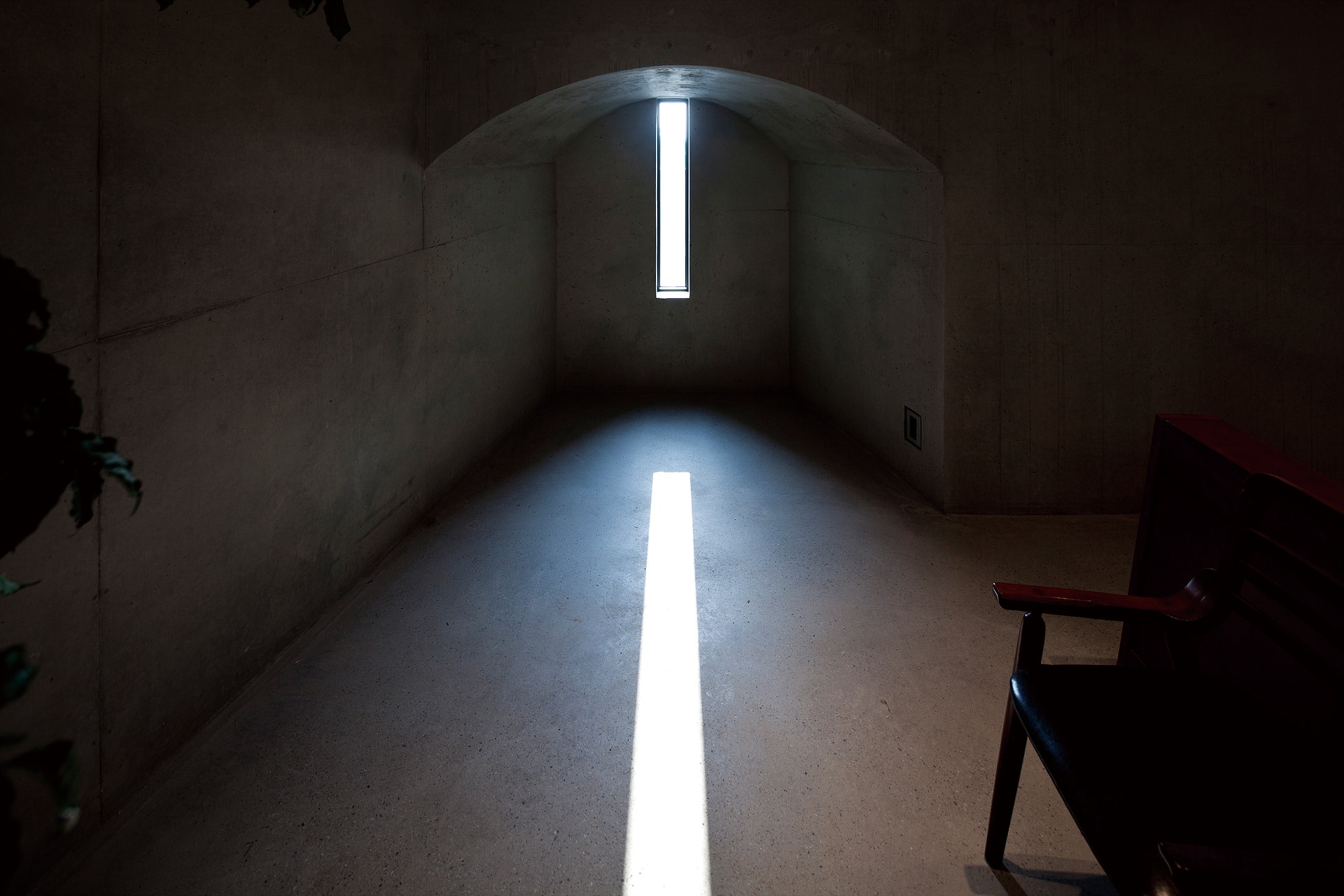Myungrye Sacred Hill
| 완공년도 | 2018 |
| 위치 | 경상남도 밀양 |
| 대지면적 | 2404㎡ |
| 건축면적 | 690㎡ |
| 연면적 | 695㎡ |
| Structural engineer | 더나은 구조 |
| Mechanical engineer | 디이테크 |
| Electrical engineer | 우림 전기 |
| Contractor | 영조건설 |
| Lighting design | 뉴라이트 |
| Landscape | 서안 |
| 완공년도 | 2018 |
| 위치 | 경상남도 밀양 |
| 대지면적 | 2404㎡ |
| 건축면적 | 690㎡ |
| 연면적 | 695㎡ |
| Structural engineer | 더나은 구조 |
| Mechanical engineer | 디이테크 |
| Electrical engineer | 우림 전기 |
| Contractor | 영조건설 |
| Lighting design | 뉴라이트 |
| Landscape | 서안 |
이곳은 1866년 병인박해(丙寅迫害) 때 서른여덟의 나이로 순교한 신석복(申錫福, 마르코, 1828-1866)을 위한 성지이다. 그는 소금과 누룩으로 장사를 하는 평범한 사람이었지만 한번 얻은 신앙을 배반하지 않아 처형당하고 만다. 그의 출생지였던 이곳에 그를 기념하는 성당이 1897년에 지어졌지만 소실되어 1938년에 원래 건물을 다소 축소하여 지은 한식 건축이 남아 지방문화재로 지정되어 있다. 이 땅은 원래 낙동강물이 휘돌아 가는 언덕이었으나 사대강 사업으로 이제 육지에 솟은 땅이 되고 말았다. 언젠가는 회복될 주변 풍경이지만 그래도 여전히 평화로웠다. 땅 위에는 한식 성당 외에도 최근 지어진 한옥과 몇 건물들이 있는데 모두가 전체 땅이 가진 지형을 거스르지는 않았다. 한옥 성당은 규모도 작고 결구방식도 초라했지만 그 속에 앉은 역사와 사건들의 시간이 중첩되어 대단히 상징적이고 위엄있는 풍모를 가지고 있었다. 이 작은 건축이 중심이 될 수밖에 없는 곳에 지어지는 새로운 건물이 형태를 갖는 것은 위험하다. 특별한 풍경을 만드는 일이 되어야 하며 그 특별성은 성스러움으로 이루어져야 하는 게 당연한 전제였다. 스톡홀름에 있는 우드랜드 공동묘지를 일컫는 단어가 생각났다. 성서적 풍경(Biblical Landscape). 그곳보다는 여기여야 했다.
우선 전체 땅을 다스리기 위해, 흔히 성당 내부 벽에 붙어 액자화되는 <십자가의 길> 십사처(十四處)를 공간화하기로 했다. 이 땅에 존재해 온 필지들을 이용해서 그 하나하나에 일 처씩을 두고 전체를 이어 십자가의 길로 만들어 순례하게 한다. 마지막 여정은 땅의 경계 부분에 있는 저수조를 이용하여 마무리하면 언덕의 땅 전체를 종주할 수 있다. 신축하는 기념성당은 서측의 경사지에 짓는데, 마치 절벽면 풍경의 일부처럼 보이게 한다. 그러나 그 내부는 빛과 어둠, 이완과 긴장 속에 각별한 경험을 갖게 하였다. 그 위는 비교적 넓은 마당을 만들어 순례행사의 규모에 따라 적절히 사용할 수 있게 하며, 평상시의 비움 또한 방만하게 보이지 않도록 계단과 난간, 종탑 등으로 적절한 긴장을 조성한다. 입구에서부터 십자가의 길을 지나 기념성당을 거쳐 다시 이 마당에 오르는 여정, 많은 사건과 다양한 풍경을 조우하는 이 장구한 길은 수도(修道), 말 그대로 길을 닦는 일이며 그로써 성서적 풍경이 완성될 것이다. 그러므로 길은 이곳 명례성지의 가장 중요한 주제가 된다.
This is a shrine dedicated to Marco Shin Seok Bok (1828-1866). An ordinary person, who sold salt and yeast, became a martyr during the Byeongin Persecution of 1866. In 1897, a small Catholic church was first built here on his birth place but was later destroyed. In 1938, a hanok cathedral was built in a reduced scale of the original building and is now designated as a cultural heritage. This land was originally a hill situated at the curve of Nakdong River, but now rests on dry land due to land fill. My hope is that the original landscape will be recovered at some point in the future. In addition to the cathedral, there were a few recent buildings that respected the topography of the site. The hanok cathedral is a humble, but meaningful and dignified structure. A new building should add to the sense of the sacred. It should be Biblical Landscape, a term that came to mind as I thought of the Woodland Cemetery.
First, to shape the entire land, I decided to build a Via Dolorosa, the fourteen Stations of the Cross, that are commonly depicted on the walls of a Catholic church. Using the pre-existing lots on the site, I would turn each of the fourteen Stations of the Cross into a place on the land and connect them. The final journey of this walk is completed by the water tank at the boundary of the site. The new commemorative church is built on the western slope as part of the cliff side landscape. The interior provides an experience of light and darkness and of tranquility and tension. A relatively large yard is created on the top to be used for pilgrimage events. Steps, banisters, a bell tower and other structures become part of a spatial tension. The journey from the entrance, through the Way of the Cross, to the commemorative church, and back to this yard— a long encounter with different events and scenes— constructs a road of asceticism. Through the cultivation of the road, the Biblical Landscape will be completed. The road is the most important theme of the Myungrye Sacred Hill.
